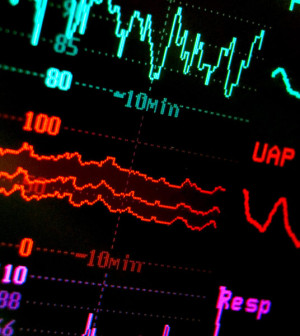- Skip Storing This Everyday Product in the Fridge Door
- Green Tea + B3 Pairing May Boost Brain Health
- Navigating Your Midlife Crisis: Embracing New Possibilities
- City Raccoons Showing Signs of Domestication
- Mapping the Exposome: Science Broadens Focus to Environmental Disease Triggers
- One Week Less on Social Media Linked to Better Mental Health
- Your Brain Changes in Stages as You Age, Study Finds
- Some Suicide Victims Show No Typical Warning Signs, Study Finds
- ByHeart Formula Faces Lawsuits After Babies Sickened With Botulism
- Switch to Vegan Diet Could Cut Your Greenhouse Gas Emissions in Half
Space Travel Alters Shape of Human Heart, Study Reports


The hearts of astronauts become more spherical when they spend long stretches of time in space, and this change might lead to heart problems, a new study indicates.
The findings advance understanding of how long-term space missions — such as traveling to Mars — could affect astronauts’ hearts and what can be done to keep them healthy, the researchers said.
Learning more about the types and amounts of exercise needed to protect astronauts’ heart health on long missions could also benefit people on Earth who have severe limitations on physical activity, including those on extended bed rest or those with heart failure, the study authors suggested.
The findings are to be presented Saturday at the American College of Cardiology (ACC) annual meeting in Washington, D.C.
“The heart doesn’t work as hard in space, which can cause a loss of muscle mass,” study senior author Dr. James Thomas, chair of cardiovascular imaging and lead scientist for ultrasound at NASA, explained in an ACC news release.
“That can have serious consequences after the return to Earth, so we’re looking into whether there are measures that can be taken to prevent or counteract that loss,” he explained.
The study included 12 astronauts who were trained to take ultrasound images of their hearts while on the International Space Station. They did this before, during and after their missions.
The astronauts’ hearts became more spherical by about 9 percent, which is similar to what scientists had predicted using mathematical models. The change was temporary and the astronauts’ hearts returned to normal after they were back on Earth.
“The models predicted the changes we observed in the astronauts almost exactly. It gives us confidence that we can move ahead and start using these models for more clinically important applications on Earth, such as to predict what happens to the heart under different stresses,” Thomas said.
He and his colleagues are now generalizing the mathematical models to analyze a number of different heart conditions, to understand how they affect heart function.
More information
The U.S. National Institutes of Health outlines how you can reduce heart risks.
Source: HealthDay
Copyright © 2025 HealthDay. All rights reserved.










